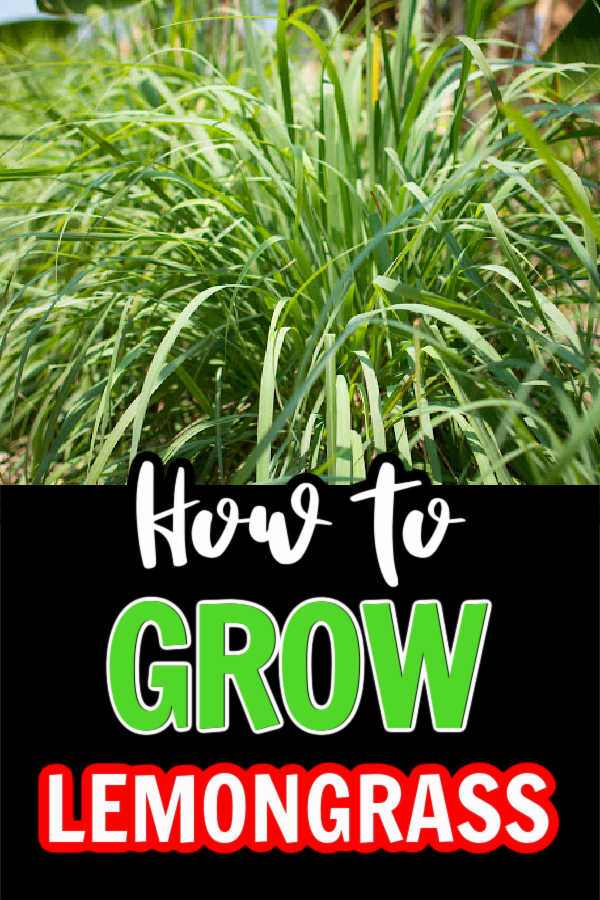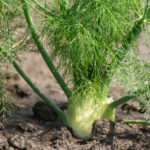Learn how to grow lemongrass from seed or by propagating cuttings.
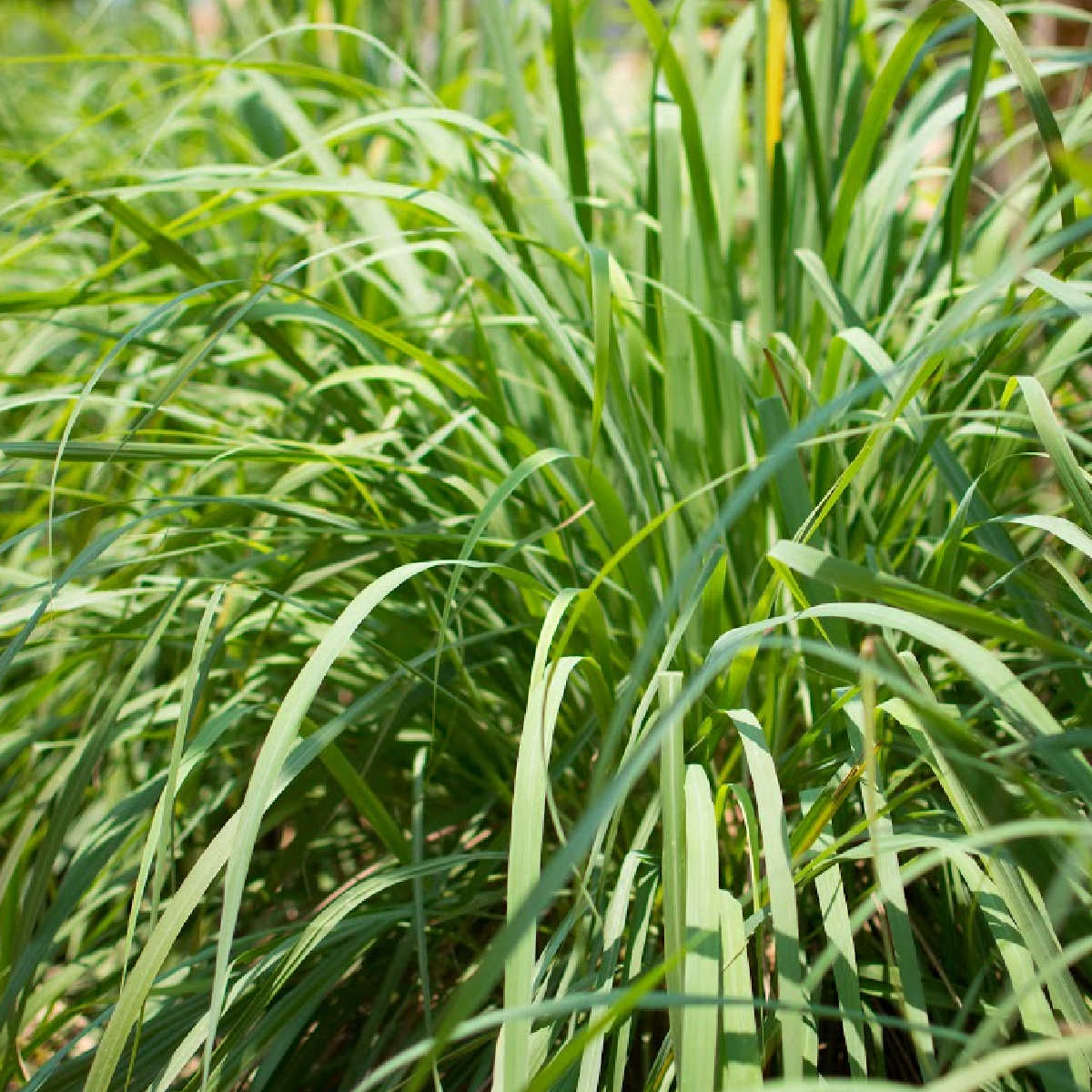
Lemongrass is an ornamental grassy herb that is great for growing in the garden and around entertainment areas in your backyard to help with repelling mosquitoes and other unwanted insects.
Throughout the summer, you can harvest fresh lemongrass stalks to use as biodegradable straws making this versatile herb a great option for growing if you want an eco-friendly option for entertaining.
The long stalks of lemongrass are full of flavor that makes a great addition to grilled, baked, or pan-seared fish and chicken. Lemon grass makes a wonderful herbal tea.
Table of Contents
How to grow lemongrass
Lemongrass can be grown from seeds or rooted from stalks.
Light Requirements
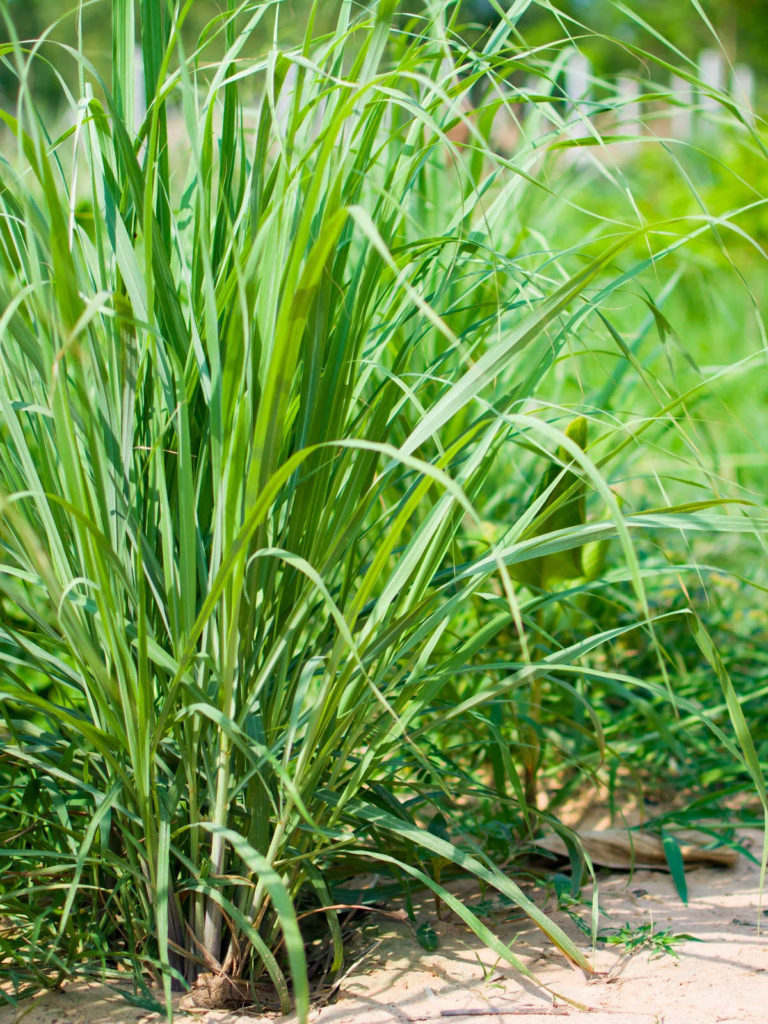
While lemongrass is hardy in zones 8 and higher, it can also be grown as an annual or in pots to be brought in for the winter in cooler climates.
Lemongrass prefers full sun, but can also thrive in partial shade if you live in a warmer, more tropical climate.
Soil Requirements
Lemongrass requires very well-draining soil. For clay-heavy or sandy soil, add plenty of organic matter, compost, and fertilizer to help add nutrients and improve drainage.
Lemongrass is an ornamental herb that grows to a large size. Lemongrass can grow 3 to 5 feet tall and up to 2 feet wide depending on how much space it has to spread. Make sure you consider what plants will be growing close to it when using it in landscaping or in your herb garden so that it does not shade plants that need full sun.
How to Plant Lemongrass
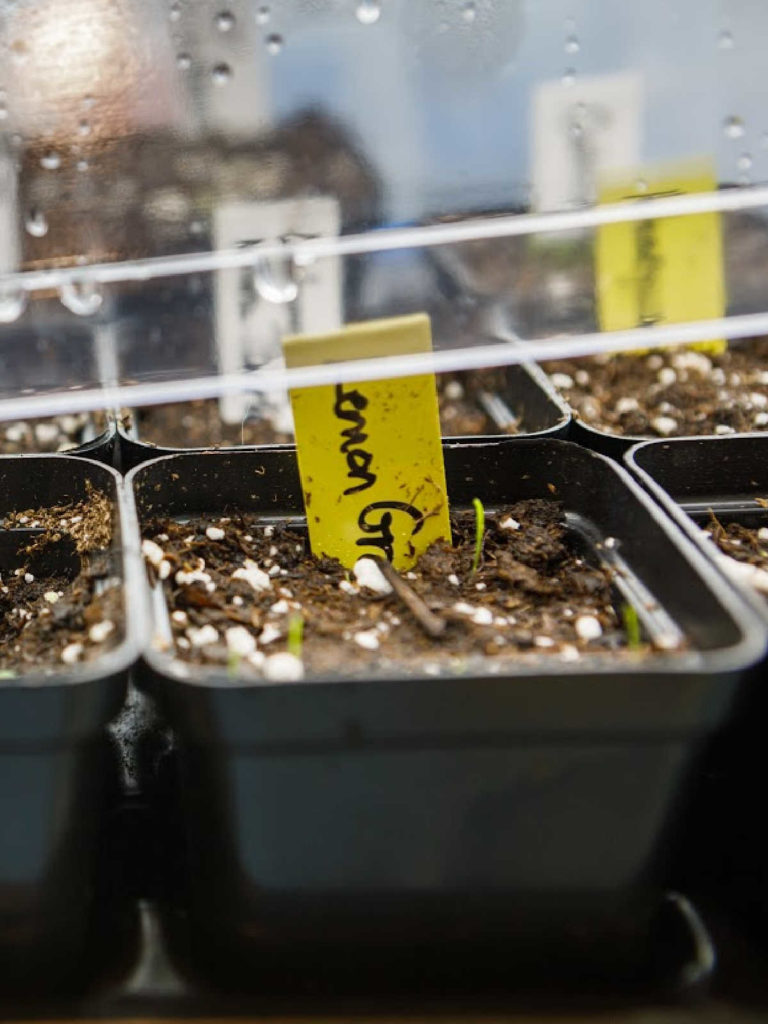
Plant lemongrass seeds only about 1/4 deep and approx. 1 inch apart. Make sure to water the seeds in after planting.
Keep the soil moist until they germinate, which should happen in 10 to 14 days, although it can take up to 3 weeks.
How to Root Lemongrass
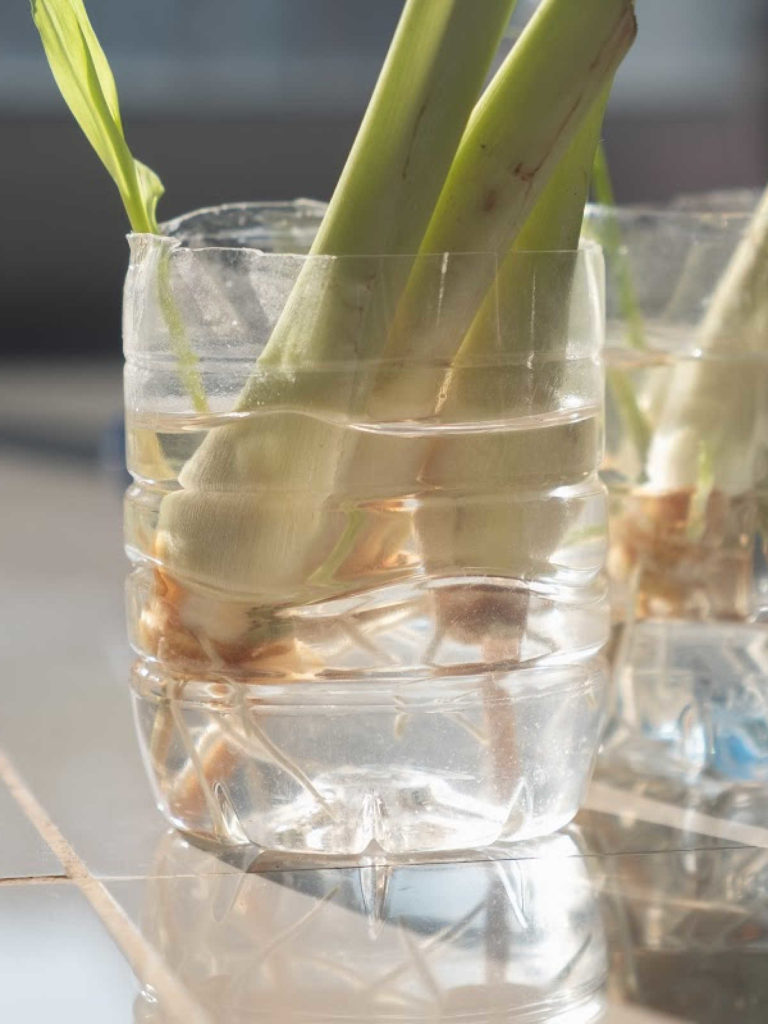
It is possible to grow lemongrass from seed, but it is also possible to propagate it through cuttings.
By placing leftover ends of lemongrass in a small amount of water, you will encourage them to grow roots quickly.
Lemongrass can be grown from even the clamshells of the fresh herb from the grocery store, allowing you to start your plants even if you do not have access to live plants.
Rooting from cuttings requires changing the water every few days and planting once the cutting begins to grow new leaves.
Transplanting
Make sure to give seedlings and rooted cuttings plenty of space to spread in the garden by planting them 18 to 24 inches apart.
It is the perfect plant for creating a privacy screen near your patio or other outdoor entertainment areas. These plants can grow to cover a significant area within a relatively short period of time if provided with enough space to spread.
Once the soil has reached 70 degrees and the last frost has passed, you are ready to plant your lemongrass without worry that it will die off from the cold. 4-6 weeks before the last frost is appropriate for planting indoors, then moving them outdoors once the danger of frost has passed and the nights are warm.
If you live in a climate that sees cold weather in the winter you can dig up a few stalks to move indoors to make it easy to replant next year. Then till the remaining leaves and stalks after your last harvest into the soil to nourish it and help feed next year’s garden or toss your plants into your compost pile if you do not plan on preserving it for cooking.
Tips for growing lemongrass in pots
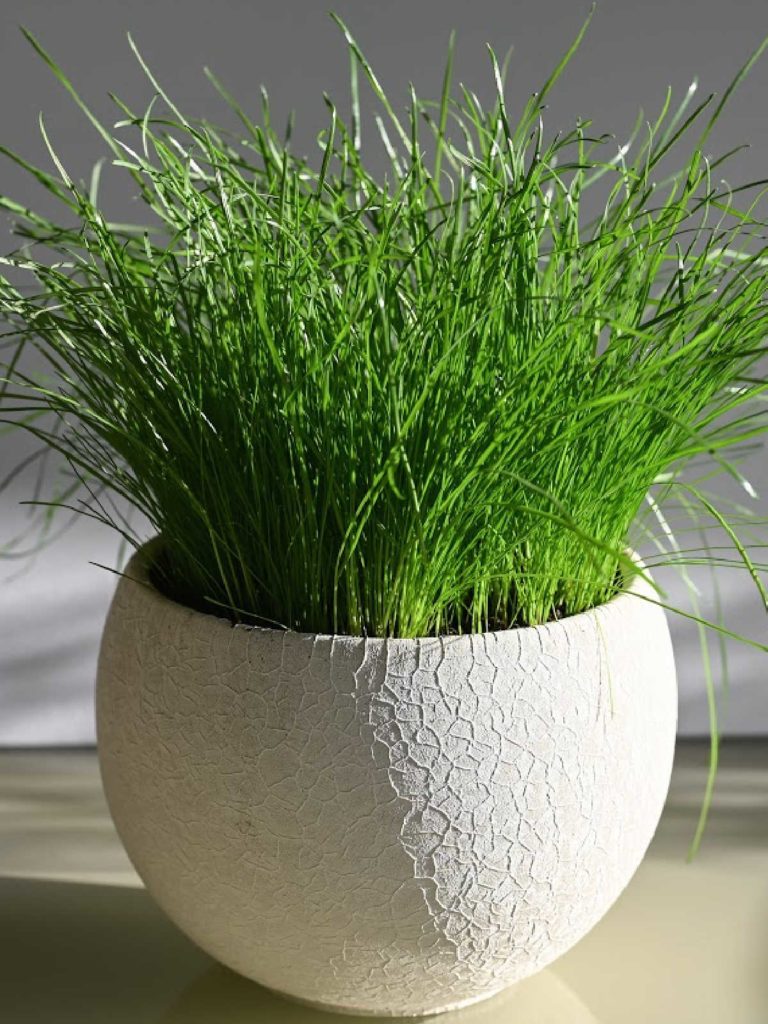
Growing lemongrass in pots is a great idea if you live in a cooler climate or just want to display it around your home or garden.
Lemongrass can be successfully grown in posts if a very large pot is used.
You’ll get the best results from a 5-gallon pot with at least a 12- to 14-inch opening at the top. These look amazing framing doorways or placed around outdoor entertainment areas to repel mosquitoes while providing some color and functionality with the light and citrusy smell of this herb.
Fertilizer
Fertilize your lemongrass often to ensure that it grows to its full potential.
If used for cooking, stop fertilizing 6 weeks before harvest. For a stronger flavor but smaller plant, you can skip fertilizing and allow the oils in the plant to be more concentrated.
If you need to trim down your lemongrass in the winter, remove the leafy tops and cut it back 5 to 6 inches.
Put potted lemongrass under a grow light or in a south-facing window throughout the winter to help it keep growing all winter long. It is unlikely your plant will grow much until it is placed outdoors when the weather warms up again in spring.
Harvesting fresh lemongrass
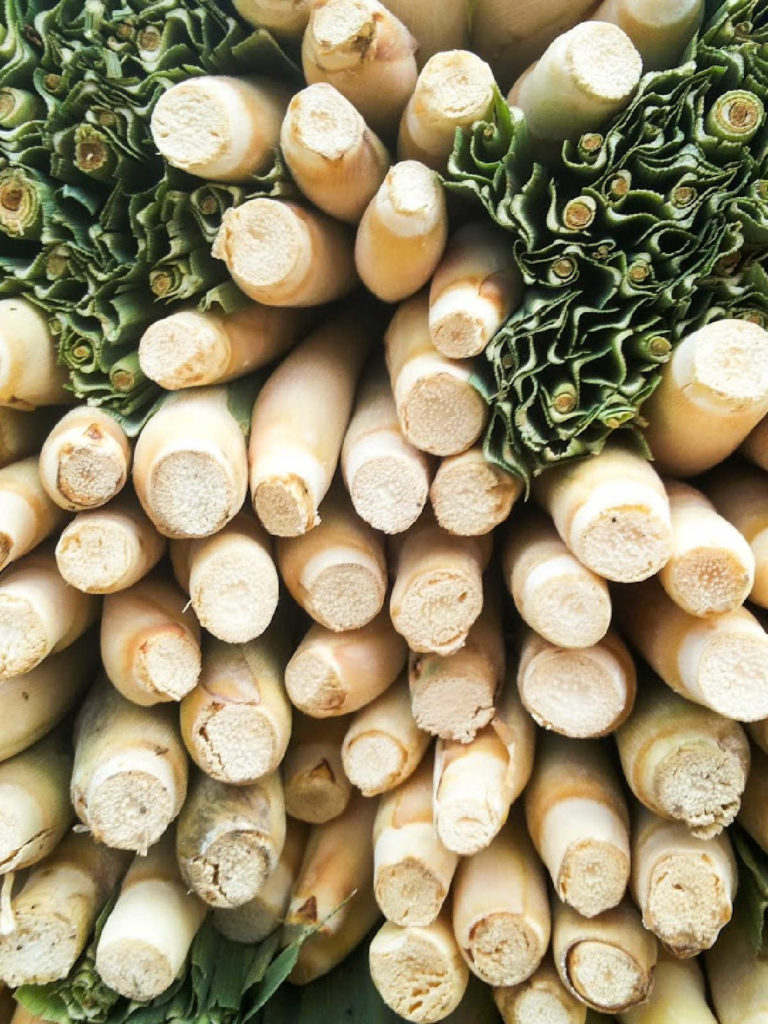
To give your plant plenty of time to grow during early harvest, only cut stalks that have reached 1/4 inch in diameter.
After the first frost, you can safely prune the entire plant back before the first frost hits, as part of your winter maintenance. As close to the ground as possible should be cut when harvesting for tender bottoms.
Choose to leave at least a few stalks 5-6 inches long if you’re leaving the plant to overwinter outdoors in a warm tropical climate or in a pot indoors.
